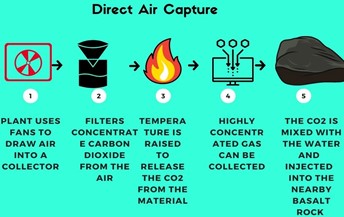Saturday, 11th September 2021
Settling Afghan Situation by Peaceful Means: BRICS
In News
The recent BRICS summit, chaired by India, called for settling the situation in Afghanistan through peaceful means.
About the News
- Humanitarian Crisis: The "New Delhi Declaration" which was adopted at the summit, emphasized the need to address the humanitarian situation and to uphold human rights, including those of women, children, and minorities.
- Intra-Afghan dialogue: The declaration has sought an inclusive intra-Afghan dialogue so as to ensure stability, civil peace, law and order.
- Combat Terrorism: The declaration emphasized its commitment to combating terrorism, including cross-border movement of terrorists, and terrorism financing networks and safe havens.
- Geopolitical concerns: Geopolitical upheaval in Afghanistan after the takeover of Kabul by the Taliban has been expressed as a concern to deal with. The declaration stressed on making Afghanistan a terror-free state and establish a democratic form of government
Significance of the BRICS Declaration
- Strength of BRICS: The Declaration becomes important as the BRICS (Brazil-Russia-India-China-South Africa) brings together five of the largest developing countries of the world, representing 41 per cent of the global population, 24 per cent of the global GDP and 16 percent of the global trade.
- Addresses a Global Crisis: The withdrawal of US forces and the Taliban takeover of Afghanistan has created a new Global crisis. Global security faces serious challenges. This underscores the need for a system of strategic stability.
- Addresses the Need for Democracy: The Afghan situation has stemmed from irresponsible attempts to impose alien values. To build a democracy without taking into account historic features and traditions that other people have followed.
- The resultant destabilisation and chaos need to be addressed by entire international community.
- Addresses Geostrategic Needs: The political upheaval in Afghanistan has alarmed geostrategic and geoeconomics concerns across the globe as Afghanistan being, “the heart of Central Asia”, and takeover of it by the Taliban will worsen the situation.
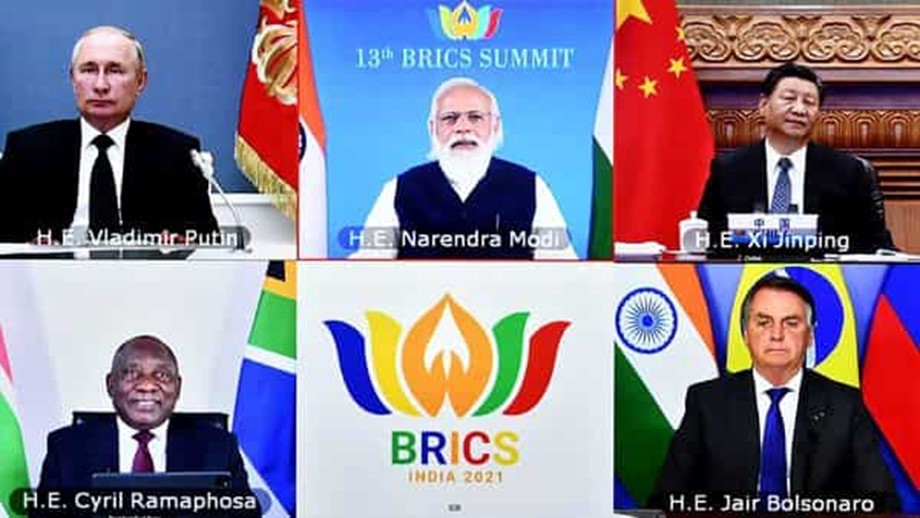
Sources:
Chandrayaan-2 Findings
In News
Recently, ISRO has released the information that the orbiter of the Chandrayaan 2 mission found unique signatures of both hydroxyl molecule (OH) an H2O water molecule.
About the News
- The Orbiter: Orbiter part of the Chandrayaan-2 mission has been gathering data from the lunar body and ISRO has recently released the information collected by the orbiter.
- The lander and rover of the Lunar Mission Chandrayaan 2 failed to make a soft landing on moon’s surface, but the Orbiter part of the mission functioned normally.
- Significance of Findings: While loads of information collected by the orbiter reiterate the findings of previous lunar missions, several novel aspects through the mapping of Moon’s surface will help space agencies immensely in planning of future missions to the Moon.
- Future missions which stand to benefit from the findings of the orbiter include ISRO-Japan Aerospace Exploration Agency (JAXA) collaboration Lunar Polar Exploration (LUPEX) mission, NASA’s Artemis mission among others.
Key Findings of Chandrayaan- 2 Mission
Use of Imaging Infra-Red Spectrometer (IIRS) has led to the following key findings
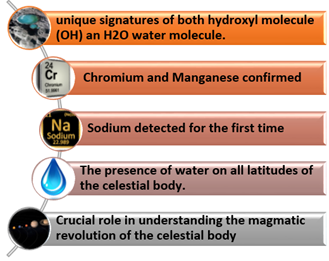
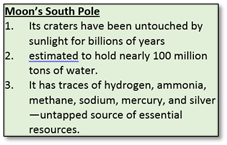
Sources:
Early Warning aircraft
In News
The Cabinet Committee on Security (CCS) has cleared a project of the DRDO to develop six new Airborne Early Warning and Control (AEW&C) aircraft for the Indian Air Force.
About the News
- The DRDO will get 6 aircraft from Air India, get them modified and fit them with indigenous 360-degree coverage AESA (active electronically scanned array) radar that can detect and track all flying objects faster than ground-based radars. Their entire maintenance and service will be in India.
- India vis-a-vis rival neighbours: Pakistan and China are far ahead of India in this arena. China has around 30 AEW&C aircraft and Pakistan has 8-10. India has only 5.
- Significance: The project will help increase the total number of AEW&C aircrafts from 5 to 11.
- The new AEW&C aircrafts will be a major upgrade on the Netra in terms of 360-degree coverage and longer range.

Early Warning aircraft and its utility
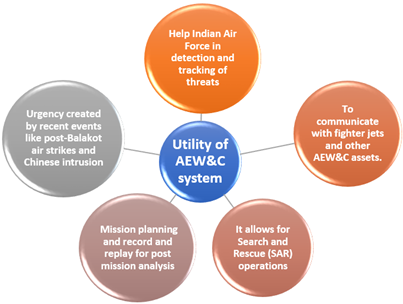
Sources:
Methanol Economy
In News
State-run engineering firm BHEL has successfully demonstrated a facility to create methanol from high ash Indian coal.
About the News
- This facility will be India's first indigenously designed High Ash Coal Gasification Based Methanol Production Plant.
- The methanol purity of the crude methanol produced at the facility is between 98 and 99.5 per cent and will assist India's coal gasification mission and coal-to-hydrogen production for Hydrogen Mission.
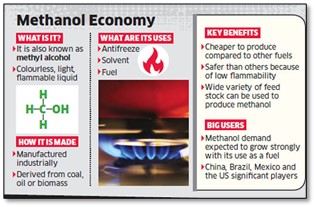
What is Methanol?
- Methanol is a single carbon compound which can be produced from coal, natural gas, and biomass. It can be blended with gasoline to use as a transport fuel along with other applications. Methanol is also used to generate di-methyl ether (DME), a liquid fuel that is very similar to diesel.
- Process of Conversion: Biomass gasification produces carbon monoxide, carbon dioxide and hydrogen These gases are converted to methanol first. The methanol is next converted to dimethyl ether (DME) to remove oxygen, present in carbon monoxide and carbon dioxide gases.
How can Methanol transform the Energy Sector?
- Clean Energy: Methanol is a clean fuel option and Methanol 15 (M15) in petrol will reduce pollution by 33% & diesel replacement by methanol will reduce by more than 80%.
- Renewable Methanol by capturing Co2 back from the atmosphere can be a significant solution to the problem of Urban pollution
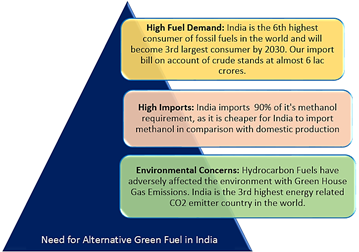
- Efficient Energy: Methanol burns efficiently in all internal combustion(IC) engines, produces no particulate matter, no soot, almost nil SOX and NOX emissions.
- The gaseous version of Methanol i.e. DME can blended with LPG and can be an excellent substitute for diesel in large buses and trucks.
- Easily available Raw materials: Methanol can be produced from Natural Gas , Indian High Ash Coal , Bio-mass, MSW , stranded and flared gases and India can achieve (through right technology adaptation} to produce Methanol.
- Major Sectors to Benefit from Mathanol
- Transportation sector: With Methanol blending program of Petrol, the cost of petrol is expected to come down by 10%.
- Marine Sector: Worldwide due to emission regulations being implemented stringently by IMO (International Maritime Organisation), marine sector is shifting to Methanol as fuel of choice.
- Railways: A Methanol locomotive prototype is being implemented by Indian Railways and once all diesel engines are converted to methanol, the annual diesel bill can be reduced by 50%.
- Cooking fuel program: A 20% blending program with LPG, without any infrastructure modifications would result in immediate savings of 6000 Crores a year.
- Means of Employment: Methanol Economy will also create close to 5 million jobs through methanol production/application and distribution services.
- Production of various chemicals: Methanol can be used for producing various chemicals like formaldehyde, acetic acid and olefins which can be exported to earn foreign exchange.
What is India doing to unlock this resource?
- Targets: NITI Aaayog has drawn out a road map to substitute 10% of Crude imports by 2030, by Methanol alone. Methanol & DME are substantially cheaper than Petrol and Diesel and India can look to reduce its fuel bill 30% by 2030.
- Plans: NITI Aayog’s road map for Methanol Economy comprises:
- Production: Production of methanol from Indian high ash coal from indigenous Technology and adopting regional production strategies to produce Methanol @ Rs. 19 a litre. India shall adopt Co2 capturing technology to make the use of coal environment friendly.
- Resources: Bio-mass, Stranded Gas & MSW for methanol production. Almost 40% of Methanol Production can be through these feed stocks.
- Use in Sectors: Utilization of methanol and DME in transportation – rail, road, marine and defence. Industrial Boilers, Diesel Gensets & Power generation & Mobile towers are other applications.
- Applications: Utilization of methanol and DME as domestic cooking fuel- cook stoves and in fuel cell applications in Marine, Gensets and Transportation.
Constraints to Methanol Economy
- Lack of Technological Prowess: The problem with existing technologies is that the conversion cost is prohibitively expensive as it relies on multi-step processes requiring high temperatures. Besides, they produce low-grade fuel, in small amounts, compared to petroleum-based fuel.
- Natural Gas Deficiency: Most of the global methanol production comes from natural gas. But India has no natural gas, and to produce methanol using imported natural gas is uneconomical.
- Expensive Coal Gasification: If not Natural gas, the next best route is to make use of India’s abundant coal. But the slow pace of the coal gasification project reflects the difficulties in technology adoption, which has been sourced from the US.
- Harm from Methanol: Methanol is more corrosive than gasoline and may require new equipment for storage and distribution of the same and is also toxic to humans if ingested.
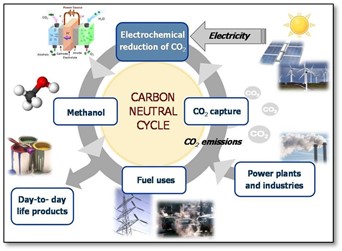
Way Forward
- Capacity Building: It is necessary to have a sufficient amount of methanol production capacity in India so that the user industries are assured of supply. Once a threshold level of confidence is reached, there should be simultaneous development of flexi-fuel vehicles which would be able to run on methanol/DME fuel blends.
- Outsource Manufacturing Facility: India should also look at options to set up a manufacturing facility for methanol/DME in Iran or Qatar as both these countries having huge reserves of natural gas can provide the same at very low prices. It is likely to be economically advantageous rather than importing crude.
Conclusion: Energy is the driver in the economic development of any country. It is expected that the developing countries like India will account for 25% hike in world-wide energy demand by 2040 due to the increase in the per capita income and rapid industrialization. Therefore, moving towards ‘Methanol Economy’ may not just help the economy, but can also be an alternative to fossil fuels and help reduce global warming by capturing CO2.
Question: Explain how Methanol can aid the economy of India. What are the major roadblocks to Methanol economy?
Sources:
- India's first high ash coal gasification based methanol production plant inaugurated at BHEL
- Methanol Economy for India: Energy Security, Make in India and Zero Carbon foot print
- METHANOL ECONOMY
- India’s Leapfrog to Methanol Economy:
- The methanol-based economy cycle model
- Towards cheaper gasoline from methanol:
- Has methanol finally got its due?
- Niti Aayog Pushes for Methanol as Cooking Fuel
The 9/11 Terrorist attacks
On 11 September, 2001 militants associated with the Islamic extremist group al Qaeda hijacked four airplanes and carried out suicide attacks against targets in the United States. Two of the planes were flown into the twin towers of the World Trade Center in New York City, a third plane hit the Pentagon just outside Washington, D.C., and the fourth plane crashed in a field in Shanksville, Pennsylvania. Almost 3,000 people were killed during the 9/11 terrorist attacks, which triggered major U.S. initiatives to combat terrorism.

Source:
Emergency Landing Facility
This is image of an Indian Air Force fighter jet landing on an emergency landing facility at Satta-Gandhav national highway stretch near Barmer. It is India's First Emergency Landing Strip. The National Highways Authority of India (NHAI) has developed the 3-km section of Satta-Gandhav stretch of NH-925 as an ELF for the IAF. India will develop emergency landing facilities will be developed at 19 other places apart from the one already operational one. This emergency landing strip will be helpful not only during a war but also during the times of natural calamities. This facility will be used for normal road traffic flow on normal days.
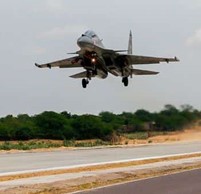
Sources:
KAZIND – 21
- Context: The 5th edition of Indo-Kazakhstan Joint Training Exercise, EXERCISE KAZIND-21 culminated recently at in Kazakhstan after 12 days of mutual learning.
- The exercise is a joint training between both the Armies, which will boost the bilateral relations between India and Kazakhstan.
- The scope of Joint Exercise includes professional exchange, planning & execution of the operation in counterterrorism environment at sub-unit level and sharing expertise on skills at arms, combat shooting and experiences in Counter Insurgency/ Counter-Terrorism operations.
- The exercise culminated after a 48-hour-long validation exercise which will involve a scenario of neutralisation of terrorists in a semi-rural hideout. It aims to strengthen mutual confidence, interoperability and enable sharing of best practices between the Armed Forces of India and Kazakhstan.

Source:
MRSAM
- Context: Recently, the DRDO hands over air defence missile (MRSAM) System to Indian Air Force.
- The MRSAM system provides point and area air defence for ground assets against a wide range of threats including fighter aircraft, UAVs, helicopters, guided and unguided munitions, sub-sonic & supersonic cruise missiles etc.
- It is capable of engaging multiple targets at ranges up to 70 kms in severe saturation scenarios. The missile is powered by indigenously developed rocket motor and control system for achieving high manoeuvrability during the terminal phase.
- The firing unit comprises of Missiles, Combat Management System (CMS), Mobile Launcher Systems (MLS), Advanced Long Range Radar, Mobile Power System (MPS), Radar Power System (RPS), Reloader Vehicle (RV) and Field Service Vehicle (FSV).
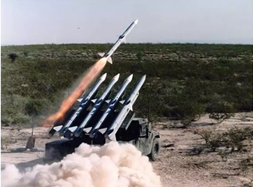
Source:
2+2 dialogue
- Context: Recently, India and Australia began the high-level 2+2 foreign and defence ministerial dialogue in New Delhi.
- The dialogue is aimed at further ramping up the overall defence and strategic cooperation between the two countries, including in the Indo-Pacific amid China's increasing military assertiveness in the region.
- The in-person talks are taking place at a time the global focus has been on the situation in Afghanistan and the issue is likely to figure in the deliberations.
- The foreign and defence ministerial talks are taking place amid renewed efforts by the Quad member countries to expand cooperation in the Indo-Pacific region. Besides India and Australia, the Quad comprises the US and Japan.
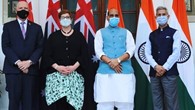
Source:
Transport and Marketing Assistance (TMA)
- Context: Centre has revised "Transport and Marketing Assistance" (TMA) scheme for Specified Agriculture Products’.
- Transport and Marketing Assistance (TMA) for Specified Agriculture Products Scheme aims to provide assistance for the international component of freight, to mitigate disadvantage of higher freight costs faced by the Indian exporters of agriculture products.
- The scheme was initially applicable for exports effected during the period from 01.03.2019 to 31.03.2020 and was later extended for exports effected up to 31.03.2021.
- Dairy products, which were not covered under the earlier scheme, will be eligible for assistance. Rates of assistance have been increased, by 50% for exports by sea and by 100% for exports by air.
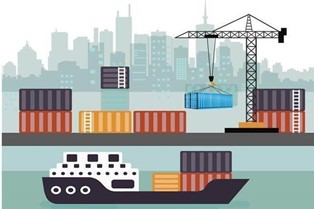
Sources:
Two decades after 9/11, the nation state remains robust
Essence: The article is written to mark the 20th anniversary of 9/11 attacks which shook America and defense capabilities of the state against non-state actors. Post attack, the country’s preparedness for such future attacks became robust and so was the determination and the ambition of the Jihadists who organized the attack. In lieu of fighting battles against non-state actors, state actors acquired power in the name of providing safety to its citizens which encroached upon the security of the individuals. The state also failed to assess threat on many fronts like the 2008 financial crises and the emergence of China alongside.
Why you should read this article?
- To understand how terrorism has evolved and challenged sovereignty of nations
- To understand the changing dynamics of state security in modern world
Two decades after 9/11, the nation state remains robust
The national security discourse is changing
Essence: The old global order is collapsing under the weight of rising China, climate change, covid-19 and terrorism. All these call for holistic national security policy making which keeps the development of a nation at the core. USA is moving away from its Cold war era policy of having a large fleet of nuclear missiles, bombers etc., to developing domestic industry, maintaining dominance in critical technology such as AI and 5G, building supply chain resilience etc. India too is facing security challenges due to domestic vulnerabilities. The need to develop domestic capabilities in critical areas as a part of national security has been iterated by the Army Chief as well. It shows the change in thinking towards national security discourse.
Why you should read this article?
- To understand the changes in the global security landscape and the reasons.
- To know about the new national security policy of USA.
- To understand about the security scenario of India and the thinking of the policymakers about the new security framework.
Source:
Stop arbitrariness in tribunal appointments
Essence: The recent appointment of Officiating President, Income Tax Appellate Tribunal (ITAT), has been marked by flouting of norms as the person appointed have superseded six Vice-Presidents. The reasons were not disclosed, pointing to the arbitrary nature and lack of transparency in the appointment process.
Such events erode the morale of the members and when incentives for hard work, honesty and intellectual integrity are taken away, the institution suffers.
Why you should read this article?
- To understand the nature of appointment of tribunals.
- To understand how transparency is a key thing in appointment of such organizations.
- To understand the values needed in the work culture of an organization.
Source:
Dhun project: Efforts towards Ecological Restoration
Background
- Phagi tehsil of Rajasthan witnessed disastrous floods in 1981 which ruined the fertility of the land
- With the topsoil getting washed, land turned barren.
- It resulted in degradation of land quality and low productivity of agriculture.
Efforts under Dhun project
- Survey: Manavendra Singh Shekhawat led the project by initiating study of history and survey of the land.
- Water Conservation: redevelopment was focused with water as theme.
- Rainwater Harvesting: Artificial ponds were dug to supply for drinking water, household and agricultural needs.
- Structural changes: Embankment, catchment structure, bunds and drainage branches were created all around the pond.
Outcome
- Ground water levels: increase in water table due to presence of water recharge pits.
- Biodiversity: resurgence in plants, animals and bird species in the locality.
- Better livelihood: agriculture, cattle grazing, allied activities spurred a revolution in local economy.
Quote
“Plans to protect air and water, wilderness and wildlife are in fact plans to protect man.” —Stewart Udall
Where can it be used:
- Paper 2: Environment and conservation
- Paper 4: Social Influence and Persuasion
Source:
Share the article
Get Latest Updates on Offers, Event dates, and free Mentorship sessions.

Get in touch with our Expert Academic Counsellors 👋
FAQs
UPSC Daily Current Affairs focuses on learning current events on a daily basis. An aspirant needs to study regular and updated information about current events, news, and relevant topics that are important for UPSC aspirants. It covers national and international affairs, government policies, socio-economic issues, science and technology advancements, and more.
UPSC Daily Current Affairs provides aspirants with a concise and comprehensive overview of the latest happenings and developments across various fields. It helps aspirants stay updated with current affairs and provides them with valuable insights and analysis, which are essential for answering questions in the UPSC examinations. It enhances their knowledge, analytical skills, and ability to connect current affairs with the UPSC syllabus.
UPSC Daily Current Affairs covers a wide range of topics, including politics, economics, science and technology, environment, social issues, governance, international relations, and more. It offers news summaries, in-depth analyses, editorials, opinion pieces, and relevant study materials. It also provides practice questions and quizzes to help aspirants test their understanding of current affairs.
Edukemy's UPSC Daily Current Affairs can be accessed through:
- UPSC Daily Current Affairs can be accessed through Current Affairs tab at the top of the Main Page of Edukemy.
- Edukemy Mobile app: The Daily Current Affairs can also be access through Edukemy Mobile App.
- Social media: Follow Edukemy’s official social media accounts or pages that provide UPSC Daily Current Affairs updates, including Facebook, Twitter, or Telegram channels.

